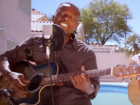All intellectual and physical property of content creators is protected under copyright. Failing to recognize copyright laws by copying the product or ideas of others can cost thousands in fines if prosecuted.
In the realm of YouTube, video creators are protected by what YouTube calls “Fair Use” guidelines. These rules make it easy for channels to fairly use content from other videos as long as they add their own changes to the video so it is not a blatant copy. Unfortunately, in recent times these guidelines have come under scrutiny by corporations, so for your own sake, it is important to understand these rules about copyright.
1. Using copyrighted music is risky.
While searching around YouTube, you may have come across videos that at certain points have muted audio with some disclaimer about a video takedown. These videos have fallen victim to copyright laws, often by using music that they specifically do not have permission to use.
This can be confusing because many believe once you personally purchase a track or album, you can use that music as you wish, but this is incorrect. The moment you start making money off that song (from YouTube ad revenue), this is now copyright infringement. At best, a video with copyrighted music will be taken down and at worse, it could be the subject of a lawsuit.
2. Parodies are not invulnerable.
Parody-style videos on YouTube tend to take source material from another YouTuber or video creator, and the creators then add their own commentary or content to alter the source video. Videos like these toe the line between original and stolen material.
YouTube recommends channels focus on making sure their edits to the source material are “transformative,” meaning that their edits add new expression or meaning to the original video, as opposed to merely copying it. Channels should take heed to this recommendation by adding their own unique changes to videos.
3. Look out for copyright strikes.
YouTube wants its service to foster an environment of creativity and to not be a place where creators steal work from each other. Thus, in order to discourage copyright infringement before legal action is taken YouTube has what are called “strikes”. When a business contacts YouTube asking for a video to be taken down as it violates their property of content, YouTube will delete the video and give one of these strikes on the account who uploaded the video.
Once a channel receives three independent strikes, it will be permanently terminated, along with every video it has uploaded. Because these strike requests can be sent by just about anyone and YouTube has only given vague explanations on the topic, video creators need to be very careful about uploading other’s material.
No one wants their channel to be deleted for simple misunderstandings, so it is incredibly important that YouTubers are cautious about uploading videos that contain copyrighted material. Even vlogs that have music playing from speakers in a store could be found to be guilty of using content without permission. Unfortunately, there are no specific guidelines one can follow exactly in order to avoid copyright strikes or legal action, so the best course of action is to not use copyrighted music or video at all.
Interested in getting your YouTube video discovered by masses of targeted fans? Click this link: www.promolta.com
Sean Harris is a writer in the midwest US who plans on majoring in computer science or physics at college. He enjoys listening to music, blogging, and reading.





Leave a Comment